Is the telescope you choose the key to unlocking the wonders of astrophotography?
For those passionate about capturing the beauty of the night sky, the right telescope can significantly enhance the quality of their celestial images. Unlike regular observational telescopes, astrophotography telescopes are specialized for taking long exposure images, tracking stars accurately, and often come with a solid mount to minimize vibrations.
Well, we’ll be going over:
- How do the aperture size and focal length of a telescope impact astrophotography?
- What are the benefits of different types of telescopes, such as refractors, reflectors, and compound telescopes, in capturing various celestial objects?
- Why is the mount an essential component in astrophotography, and what should you look for in a mount when choosing a telescope?
Whether you’re a seasoned astro-photographer or just beginning your journey into capturing the cosmos, finding the right telescope is essential.
Let’s dive in.
Top Picks for Astrophotography Telescopes
- SVBONY SV503 80ED – Top Pick
- SVBONY SV305 Camera
- Sky-Watcher EvoStar 72
- SVBONY SV48P Telescope
- Sky Watcher HEQ5 Mount
In my quest to capture the cosmos, I’ve sifted through countless options to bring you telescopes that stand out for astrophotography. The following list showcases instruments that offer a balance of quality, reliability, and features conducive to photographing the night sky’s wonders. Whether you’re a seasoned astro-photographer or just starting, these telescopes are designed to help you take your stargazing experience to the next level.
SVBONY SV503 80ED
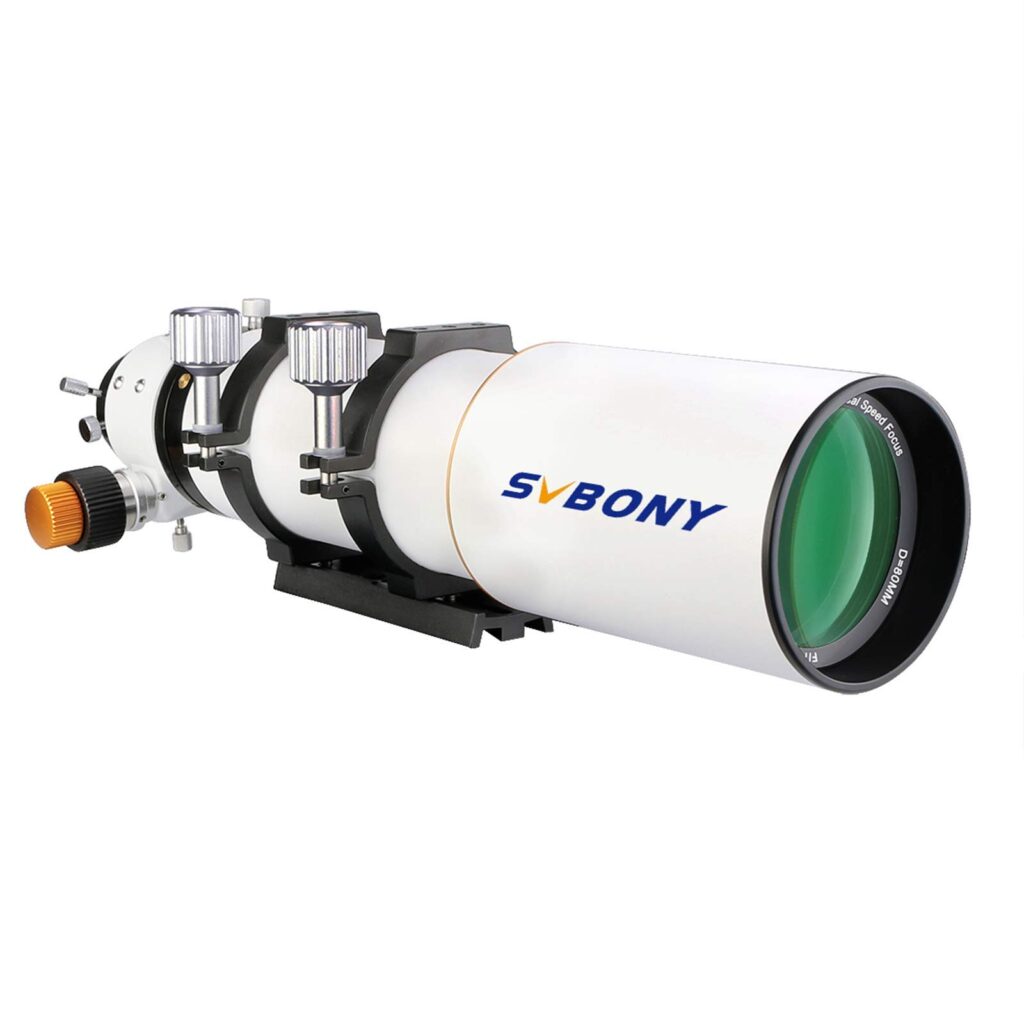
In my hands, the SVBONY SV503 80ED has shown itself to be a capable telescope for anyone serious about stepping into astrophotography with confidence.
Pros
Cons
After spending a few nights under the stars with the SVBONY SV503, I’ve been consistently impressed with the color and clarity of the images. Whether I was aiming at faint nebulae or sparkling star clusters, the extra-low dispersion glass provided views that were sharp and free from chromatic aberration.
The dual-speed focuser made pinpointing perfect sharpness a breeze; a light twist of the fine-focus knob was all it took to bring the stars into precise detail. It stood out to me how smooth and controlled the focusing process felt, a testament to the telescope’s high-quality mechanical design.
Finally, the robustness of the SV503 cannot go unmentioned. Its CNC-machined body not only looks sophisticated but also feels reliable and long-lasting. Pulling this telescope out of its packaging, I could tell immediately that it was crafted with care and designed to withstand many nights of observation.
If I had to pinpoint a couple of drawbacks, the most prominent would be the need for extra equipment to accommodate certain photography setups, particularly if you’re using a DSLR. Also, the focus rack’s travel limit posed some limitations; I had to fiddle a bit to get a couple of my wider eyepieces and one of my cameras to focus correctly. Although it’s portable, its weight may be a slight inconvenience for those used to more lightweight, travel-friendly models.
Overall, the SVBONY SV503 80ED has been a pleasure to use for astrophotography. It combines quality optics with solid construction, offering performance that can satisfy both beginners eager to learn and seasoned stargazers looking for a reliable option.
SVBONY SV305 Camera
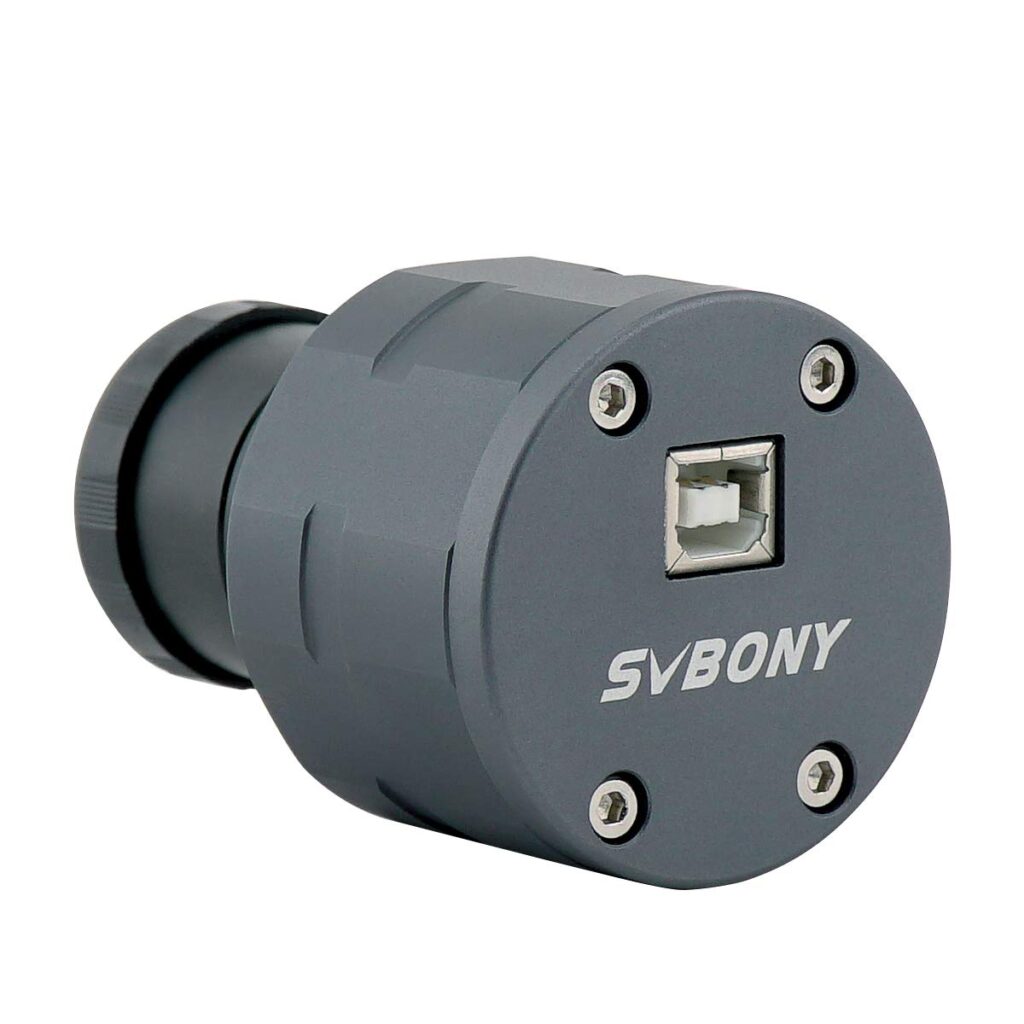
I found the SVBONY SV305 to be an exceptional tool for beginners eager to capture the night sky’s wonders.
Pros
Cons
Upon unboxing the SVBONY SV305, I was eager to test its boasted sensitivity for astrophotography. It certainly didn’t disappoint when capturing planetary images. The back-illuminated CMOS sensor facilitated crisp and detailed shots of celestial bodies.
My experience with the onboard 128MB DDR buffer was smooth. Even when my computer was multitasking, the SV305 adeptly managed image transfers without a hitch. I value reliability in transferring images, and this camera ensures that.
Another aspect I appreciate is the camera’s flexibility across different operating systems. Effortlessly, I connected it to my Windows laptop and later to a Raspberry Pi without any hiccups. This versatility is a significant plus for users who might switch tech platforms.
On the flip side, when I aimed to capture more extensive cosmic structures, the SV305 faced limitations. Its narrow field of view and light sensitivity required patience and proper adjustments to get clearer images of faint objects.
Lastly, setting up the software needed a bit more effort than anticipated. It was a one-time inconvenience, but worth mentioning for those less inclined towards technical setups.
In all, the SV305 is an affordable entry-level astrophotography camera that serves up planetary images with ease. Although not designed for deep-sky imaging, it handles what it’s meant for with finesse.
Sky-Watcher EvoStar 72
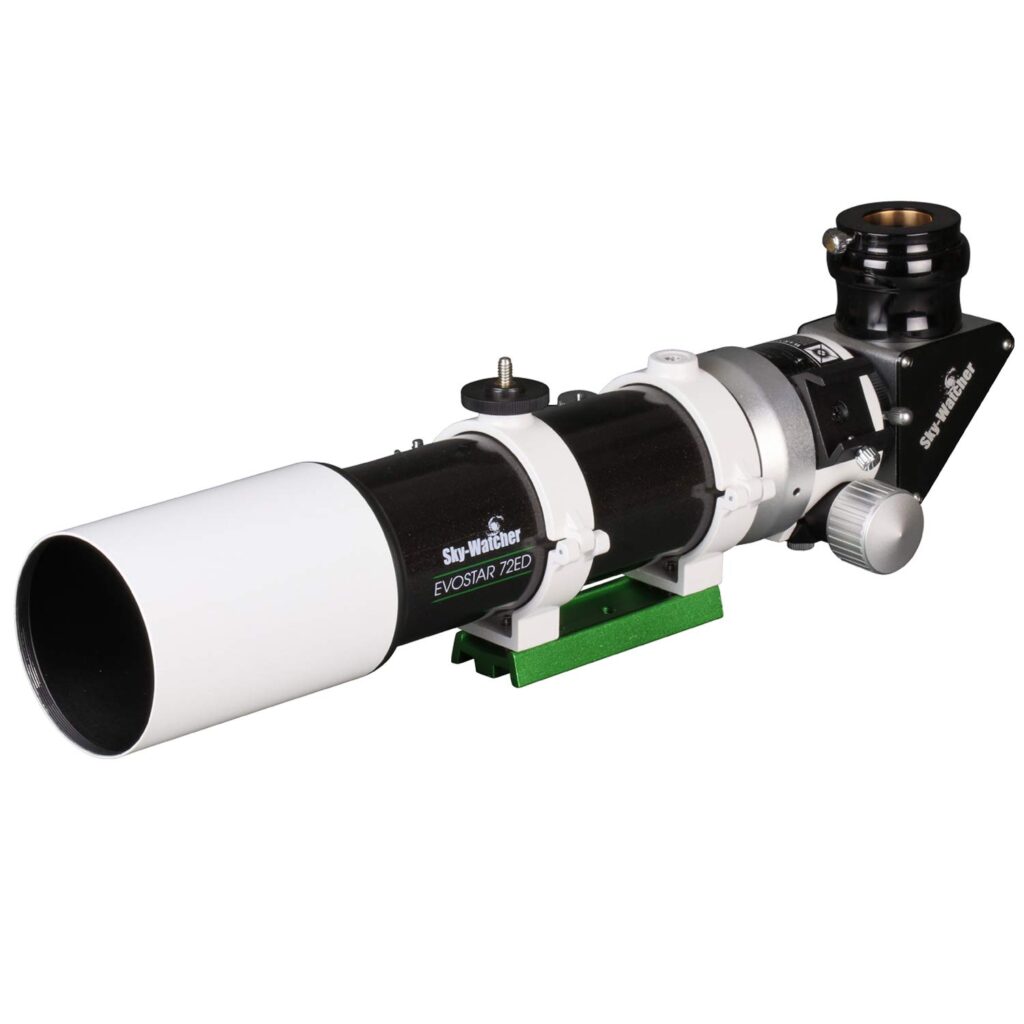
Whether you’re diving into astrophotography or expanding your celestial viewing, the EvoStar 72 is a stellar choice that won’t disappoint.
Pros
Cons
Capturing the night sky through the lens of the EvoStar 72 has been a real joy. My first outing with this telescope was an experience worth recounting, as the clarity of the celestial objects took me by surprise. The glass quality genuinely lives up to Sky-Watcher’s reputation, exhibiting minimal color fringing even when zeroing in on the brightest of planets.
Astrophotography can prove to be a fickle beast, but with this little dynamo, the learning curve felt much more manageable. Achieving focus was a simple affair, thanks to the 10:1 dual-speed Crayford-style focuser, making fine adjustments nearly effortless. Plus, the portability is a game-changer—whether I’m heading out to a remote dark sky location or just setting up in the backyard, I can always bring the EvoStar 72 along without a hassle.
Reflecting on the drawbacks, the exclusion of an eyepiece was a bit of a letdown. Expect to invest in some extras to really harness the full potential of this scope. Furthermore, on one blustery night, I found the scope’s lightweight design needed a sturdier mount to maintain stability—a minor gripe, but noteworthy for those who shoot in less than ideal conditions.
The EvoStar 72 proves its worth as an accessible entry into the realm of astrophotography. Despite its few shortcomings, the telescope’s performance, especially at its price point, has solidified its place in my collection. For anyone looking to capture the cosmos, this is a worthy instrument that combines quality and convenience like few others.
SVBONY SV48P Telescope
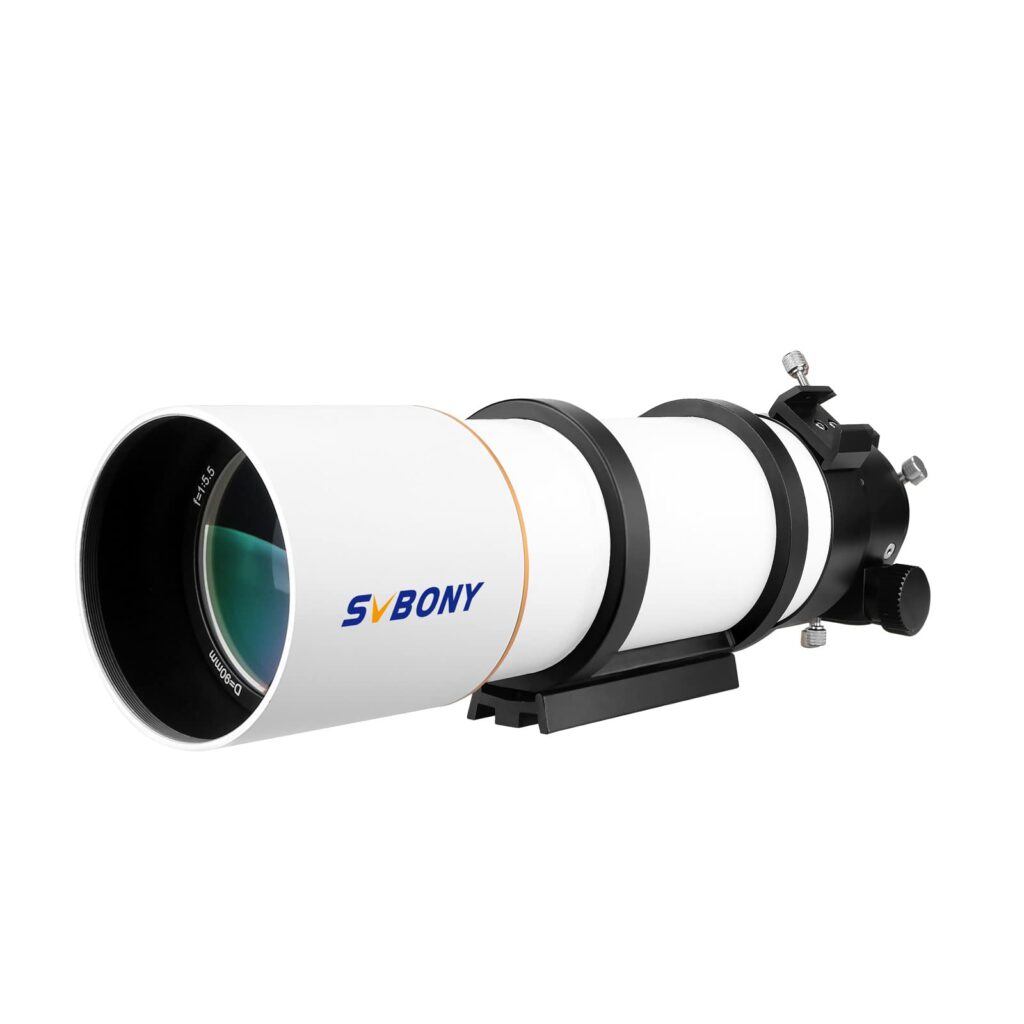
After spending time under the stars with the SVBONY SV48P, I find its ease of use and solid build impressive for newcomers to astrophotography.
Pros
Cons
The first night I pointed the SV48P to the heavens, I was struck by the crispness of the moon’s craters at the edges of its wide 90mm aperture view. Its multicoated lens ensures that light is harnessed effectively, a critical factor when observing fainter celestial objects. It seems tailor-made for deep sky enthusiasts looking to take their first shot at astrophotography without compromising on visual experiences.
Portability often dictates the frequency of telescope use, and the SV48P offers a form factor that’s easy to handle. Its metal interface suggests longevity, reassuring me that it can accompany me on countless night sky adventures. While handling it, the telescope’s capacity for 360-degree rotation aids in framing that perfect astrophoto, which is often the difference between a good and a great shot.
Although I’ve glimpsed magnificent deep space wonders with the SV48P, it does exhibit chromatic aberration, which is especially notable against the bright backdrop of the moon or when zooming in on planets. Nonetheless, such issues are common in this price range and don’t detract too much from the overall experience. It’s a reliable companion, one that delivers more than what its price tag would suggest, making it a fine choice for anyone’s introduction to the cosmos.
Sky Watcher HEQ5 Mount
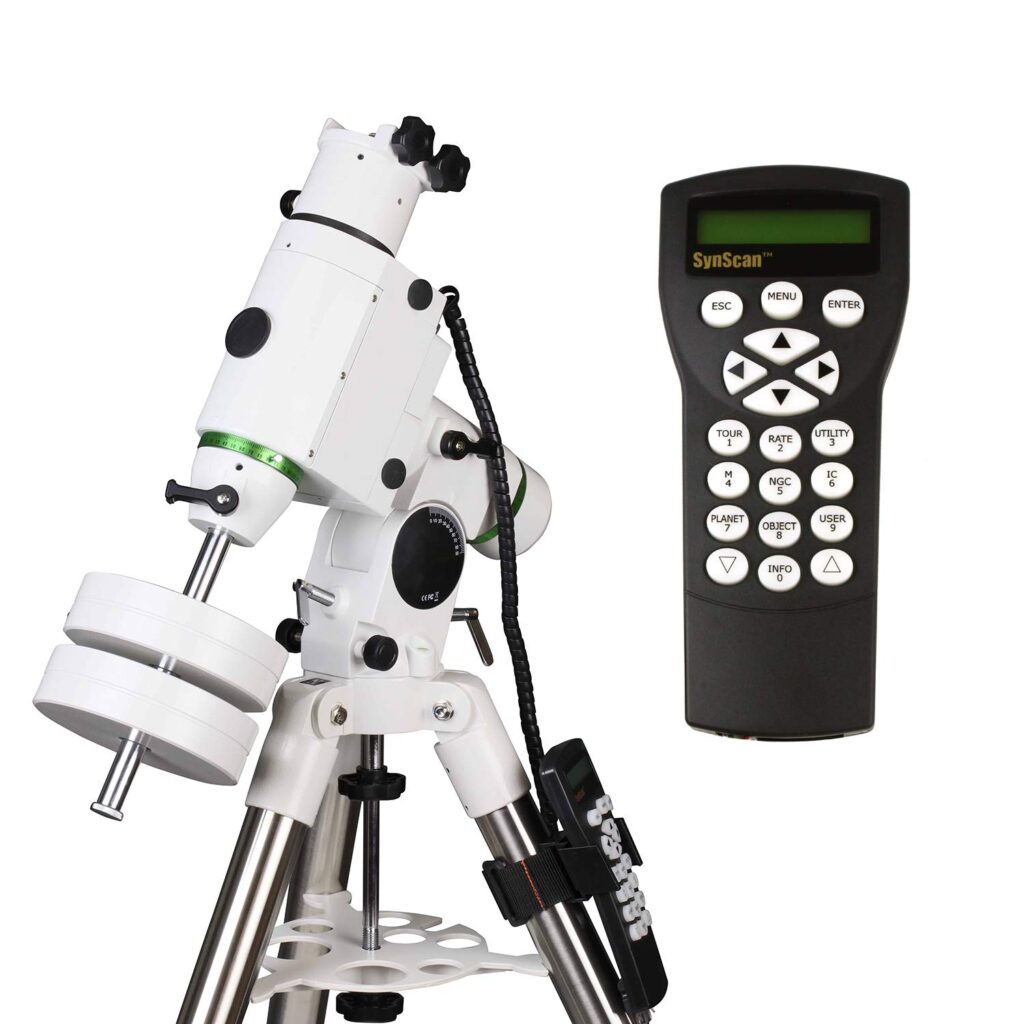
After a night under the stars, I can confidently say the Sky Watcher HEQ5 is a fantastic purchase for both newcomers and seasoned astronomers who need a reliable mount for astrophotography.
Pros
Cons
Last night, I had the pleasure of using the Sky Watcher HEQ5. Its sturdy build immediately felt promising as I mounted my 120mm refractor. The all-metal construction didn’t falter, even after hours of tracking celestial objects. It felt like an all-rounder that could satisfy both my visual and astrophotography cravings.
Navigating the night sky with the SynScan controller was a breeze. The extensive database led me to celestial jewels I had only seen in images. Each object was effortlessly centred in my view, ready to be photographed. The mount’s movement was smooth and accurate, leaving no room for the frustration often accompanied by lesser mounts.
Final thoughts: despite its advantages, I did note that customizing for computer control would incur extra costs and effort. However, the HEQ5 made such a strong impression on me that I see it as a minor hiccup. Whether it’s deep-sky imaging or casual stargazing, this mount won’t disappoint. Marks of practical engineering, like the rolling steel tripod, were a clear indicator of its durability and value.
Buying Guide
When I select a telescope for astrophotography, I focus on several key features to ensure I get the best results.
Aperture
The aperture size is crucial as it determines how much light the telescope can gather. A larger aperture allows for more detailed and brighter images.
- Small (< 80mm): Suitable for wide-field imaging.
- Medium (80mm – 150mm): A versatile range, good for various objects.
- Large (> 150mm): Ideal for detailed images of distant galaxies and nebulae.
Mount Type
A sturdy and precise mount is vital for astrophotography to avoid image blurring during long exposures.
- Alt-Azimuth: Simple and more affordable but not ideal for tracking the sky over long periods.
- Equatorial: Allows accurate tracking of celestial objects, ideal for long-exposure astrophotography.
Camera Compatibility
Ensure the telescope’s focus mechanism suits my camera, whether it’s a DSLR or a dedicated astronomy camera.
- DSLR Compatible: Check for necessary adapters and T-rings.
- Dedicated Astronomy Cameras: Often require specific back-focus distances.
Portability
Consider how often I’ll be transporting my telescope. Portability is key for those who travel to dark sky locations.
- Portable: Easy to carry and set up on the go.
- Stationary: Larger and more cumbersome; best for backyard observatories.
Focal Length and Ratio
These determine the field of view and image scale—important for the types of celestial objects I plan to photograph.
- Short Focal Length: Wider field of view, suited for large deep-sky objects.
- Long Focal Length: Narrower view, for detailed shots of planets and small galaxies.
Budget Lastly, I always consider my budget as telescopes can range from relatively inexpensive to quite costly, and I find a balance between quality features and cost.
When I follow these guidelines, I can confidently make an informed decision about the most suitable telescope for my astrophotography needs.
Frequently Asked Questions
In astrophotography, success often hinges on the equipment you choose. I’m here to help you understand the essentials.
What features should I look for in a telescope if I’m new to astrophotography?
For beginners, it’s crucial to select a telescope with a sturdy mount, good optical quality, and a focal length appropriate for your desired targets. An equatorial mount is beneficial for tracking celestial objects as they move across the sky.
How does telescope aperture size affect astrophotography quality?
Aperture size directly impacts the telescope’s ability to gather light. A larger aperture allows more light to reach the camera sensor, which improves image quality and allows for shorter exposure times.
What are the advantages of using a refractor telescope for astrophotography?
Refractor telescopes often provide sharp and high-contrast images with less maintenance required. They are known for their durability and reliably straight optics, making them excellent for capturing detailed astrophotos.
Which telescope mounts are preferred for stable astrophotography?
Equatorial mounts are generally preferred for stable astrophotography because they compensate for Earth’s rotation and enable smooth tracking of celestial objects. A mount with GoTo capabilities can also be very helpful for locating and tracking objects with precision.
Can you recommend telescopes that are suitable for deep space astrophotography?
For deep space astrophotography, telescopes like the Celestron EdgeHD series or the Orion Atlas Pro AZ/EQ-G with a large aperture and a long focal length can produce breathtaking images of distant galaxies and nebulae.
How do I integrate a DSLR camera with a telescope for astrophotography purposes?
To connect a DSLR camera to a telescope, you’ll need an appropriate T-ring adapter for your camera model and a T-adapter for the telescope’s eyepiece holder. Ensure a secure fit to minimize vibrations and maintain image clarity.

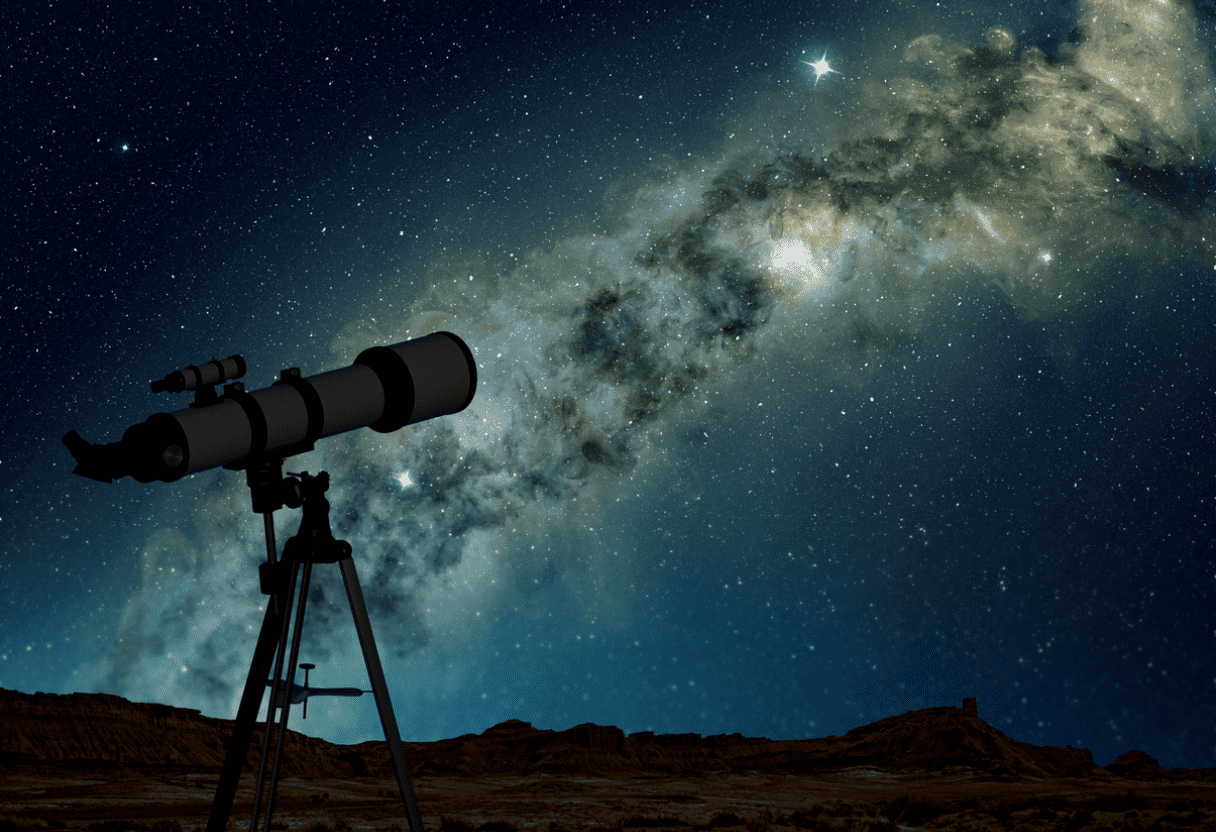
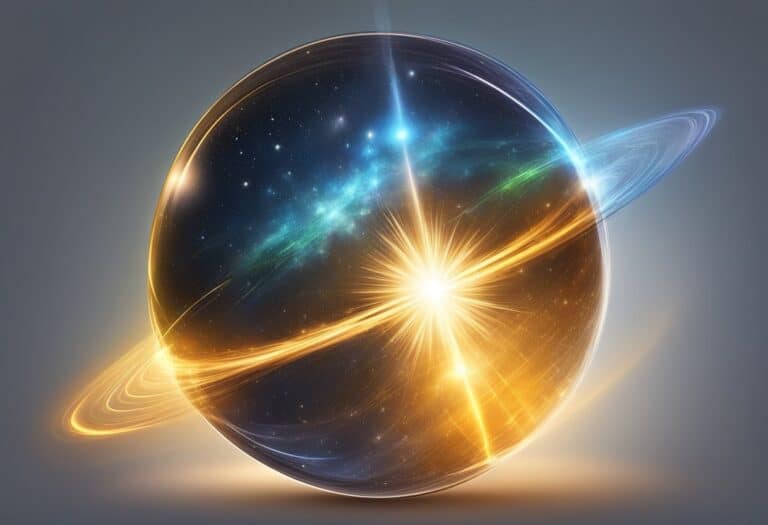
![Best Deals on Telescopes: Top [year] Sales](https://observationhobbies.com/wp-content/uploads/2024/01/Best-Deals-on-Telescopes-768x525.png)

![Best Smartphone Telescope Adapter: Top [year] Picks](https://observationhobbies.com/wp-content/uploads/2024/01/Best-Smartphone-Telescope-Adapter-768x525.png)

